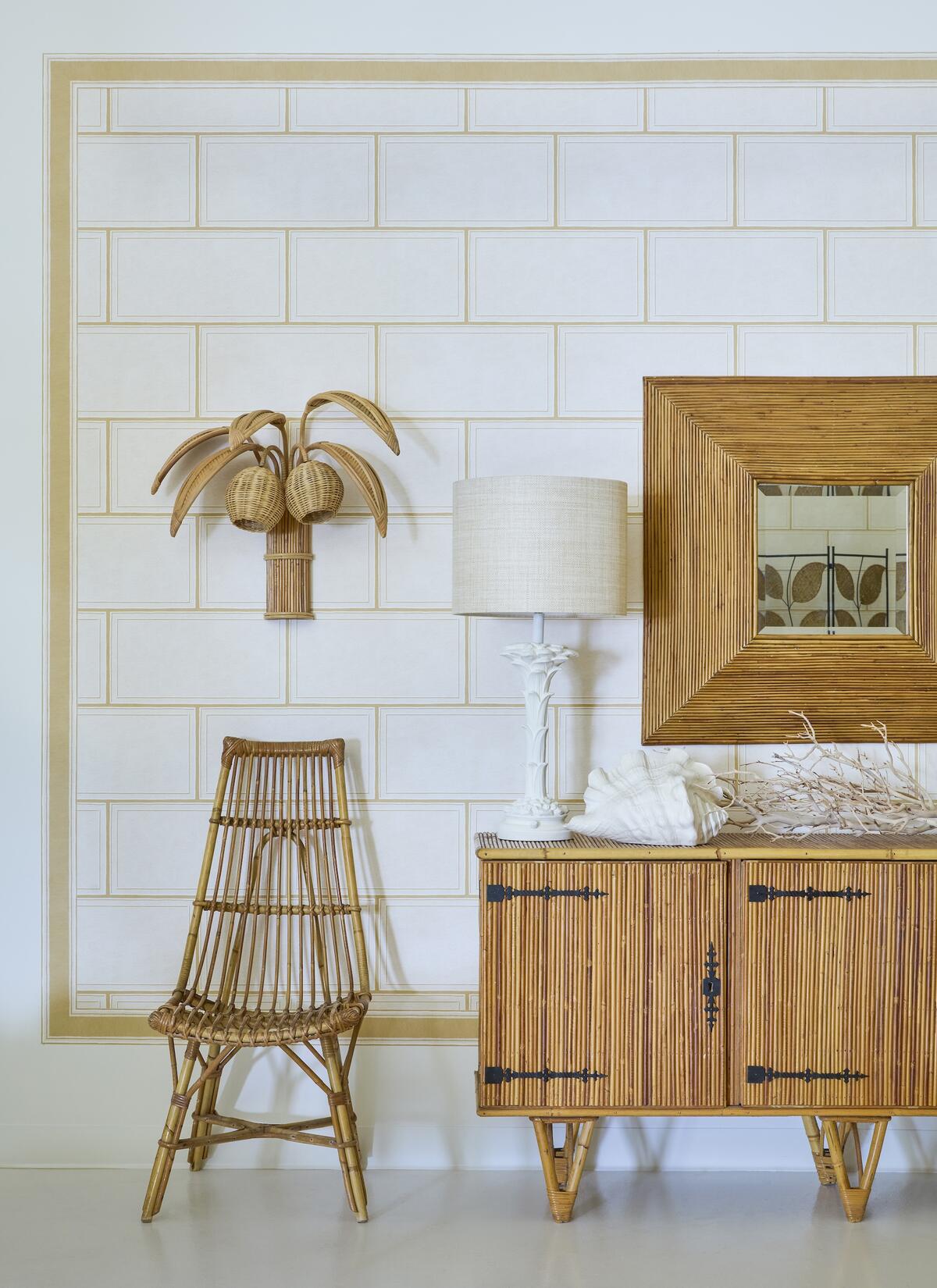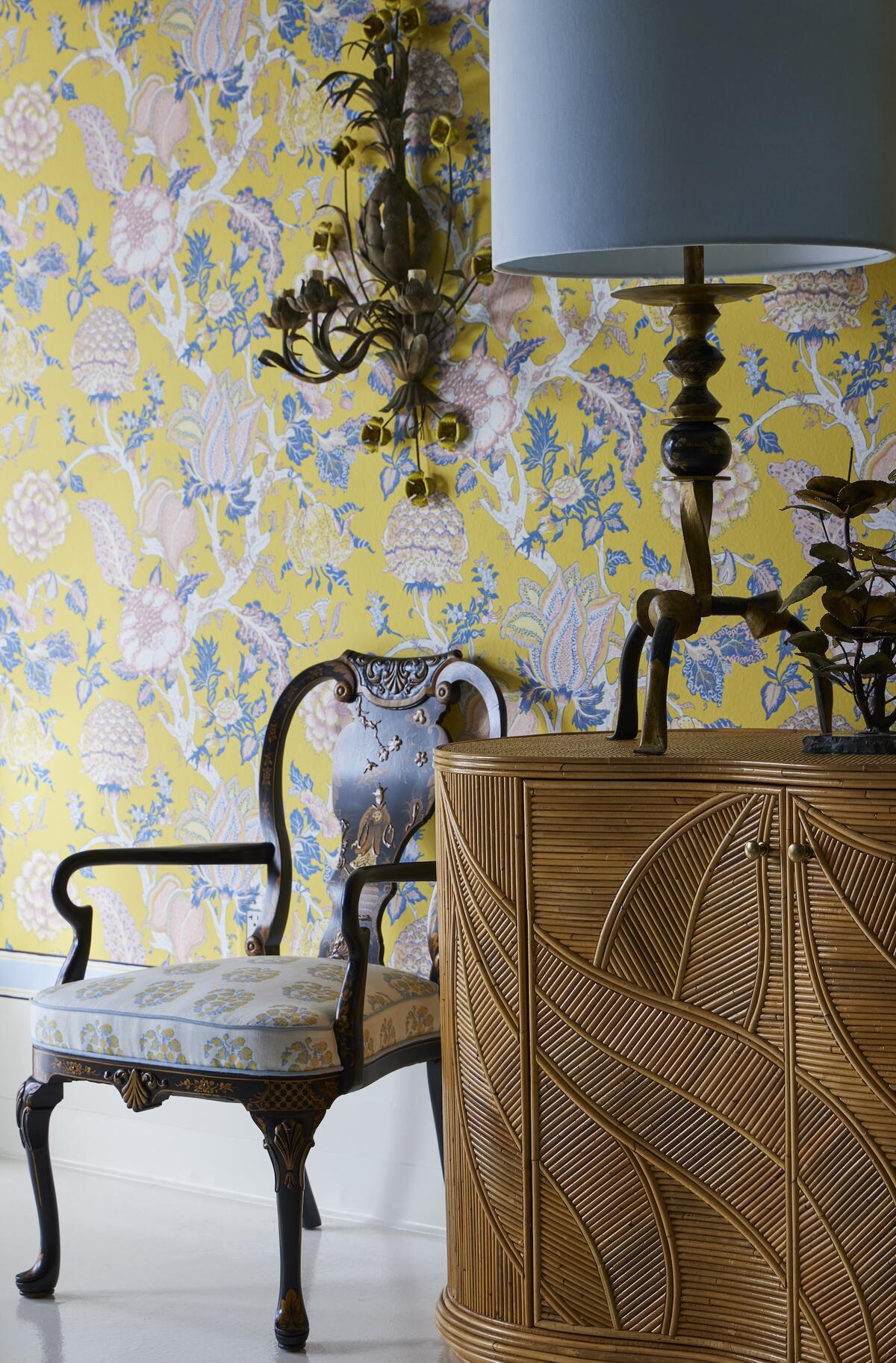In Business of Home’s series Shop Talk, we chat with owners of home furnishings stores across the country to hear about their hard-won lessons and challenges, big and small. This week, we spoke with Andrew Uihlein, the president of designer Alessandra Branca’s company Casa Branca.
Known for her bold, pattern-packed interiors, the Italian-born Branca has enjoyed three decades of an illustrious career, with widely published projects and a successful line of wallcoverings and fabrics. Yet at the beginning of the pandemic, amid a slew of cancellations, she considered closing her business and retiring. Four years later, she’s operating two new stores in the Palm Beach area, including a 4,000-square-foot showroom in West Palm Beach that opened last month.

No one is more awed and less surprised than her son, Uihlein, who joined the company in 2019 after getting his MBA. Here, he discusses working across several cities, retooling the store’s design for curb appeal and serving the considerable Palm Beach design community.
How did you become involved in the business?
Alessandra Branca is my mother, and she’s been a designer for about 40 years. Most of her career has been as an interior designer, although at different points in her career, she’s had boutiques and also something similar to a trade showroom. In 2019, she started pulling together details for her own in-house fabric line. At the time, I was trying to start working in fashion after business school. I had worked in e-commerce a little bit, and so I came on board to help her look at how to launch the [fabric]: distribution in this space, the different ways people get these lines out there, showrooms, licensing. I started in operations and realized I was really interested in it, and over the next couple of years took on more of a leading role in her company.
I’m the president now, and I opened our store in Palm Beach and ran it every day at the beginning. My role includes hiring, marketing, HR, finance, distribution, partnerships, sourcing and a good amount of working in the store and in our showroom.
Tell me about the new location. How did the stores come about?
During Covid, Alessandra shut down her New York office and considered closing her business. For a few months there, it seemed like it might be the end of things, and she’d had a wonderful career. But so many of her clients said, “Hey, actually, forget that project we were working on. We’d like to spruce up our house down in South Florida,” or “We’re buying a house in South Florida!” It became clear that Palm Beach was going to be an important part of her business.
So she took this space in the entrance to the Everglades Club—which is designed by Addison Mizner, the person who kind of planned the town of Palm Beach—as an office. We said, “Can we just have one wall in the space to show the fabrics and wallpapers?” Within a couple of weeks, everyone walking by was asking to buy everything we had. We fast-tracked something that we didn’t think we were going to do for two or three years after launching, which was to have a physical space. We thought we were going to be launching this line exclusively through showrooms. We just dove in, with whatever we could get from our own sources within the United States, and with all of the vendors of porcelain and ceramics in France and Italy who Alessandra hasbeen building relationships with for over 30 years.
In January 2021, [we thought] this is going to be an appointment-only showroom. That quickly morphed into being open every day from 10 a.m. to 6 p.m. And we just opened our new showroom in West Palm Beach in a really cool, newly developed stretch of what used to be warehouses that have been converted into galleries. That’s brand-new, and we have 3,000 square feet.
Aside from the real estate market boom in the area, do you think people were just yearning to go someplace in person?
Our products, there’s no alternative to seeing and feeling them at scale. How does it work with light? What is the color saturation? What kind of energy do you get out of these things? A retail store allows you to not only give people that experience of discovering really special things, it also [convinces customers] these items are worth putting the investment into.
Palm Beach has a lot of beautiful retail. A lot of luxury brands are on that block, but beyond that, it has a pretty incredible community of small-business owners, especially in the design space. It’s a seasonal community that has adapted to a massive influx of people and more of a year-round mentality. There’s also a lifestyle and an aesthetic here that is very design-forward. We tailored our design of the store to be beachy but sophisticated, choosing fabrics that have lots of white in the background but are still floral and colorful, choosing porcelains and ceramics that work well in bright homes. Initially, Alessandra painted the walls a deep chocolate brown, which people were blown away by. Our next iteration of the store, we did it in sky blue, with accents of green and lots of white shelving, and that was a bit more what people were expecting and certainly increased the curb appeal for people walking by. All of these iterations are in reaction to how people are experiencing the space and what they are comfortable with. You sometimes have to pay attention to the way that we’ve been trained to shop and navigate a store. A space that looks like a living room is great for an interior designer; it’s not great for someone coming in to know what they can buy and feeling comfortable taking things off a shelf.

What is the balance between trade customers and regular consumers?
Palm Beach has a lot of real design enthusiasts who are super knowledgeable about product, and so we do get a lot of individuals. I would say in terms of overall foot traffic, it’s probably 70-30 [regular] retail, but of those 70 percent, I would say half are working with designers actively or have worked with designers in the past and know the industry. We do a considerable amount of industry events. We just had 200 people in for Palm Beach Design Days, a new trade event. We regularly host book signings, gatherings and pop-ups for other brands, so you get those designers who are in the town or visiting, but then you also get all of the fans of the designers and architects or those who have worked with them. The design awareness and level of sophistication and understanding here far exceeds what I had going into this industry, even though I was raised by someone who lives and breathes interior design and architecture and art.
What is the balance of merchandise? How much is proprietary lines, and are there any outside vendors?
It’s about 50-50. In the trade area, it’s more like 80-20, with textiles, wallcoverings and our upholstery line. The antique and vintage seating is typically re-covered in our fabrics. When it comes to case goods, side tables and coffee tables, those are usually sourced at auction or from dealers in France and Italy. Of the products not designed by us, we work with 25 to 50 artisans [and] either we are selecting product from within their very small lines, or we are customizing and making exclusive designs.
Does the new store look very different from the first?
I had been looking for warehouse space; we didn’t think that we were going to expand more in Palm Beach. When I got in touch with this project, it was being developed by the chairman of the Norton Museum, who is also an artist and collector. He had this vision for creating elevated gallery spaces in West Palm Beach. So it was a white box, a rectangular shell, with this open airiness. What we settled on were three separate galleries, separated by openings down the middle, with 10-foot walls. The front gallery is a mix of our upholstery, antique, vintage and unique pieces, and artwork in a designed vignette; the second space is our gallery for a revolving set of unique items, with furniture placed in small groupings and artwork on the walls; then the back room is our traditional showroom with the entire upholstery line displayed, a full fabric wall, and a long table where designers can bring over swatches and work with mood boards. Throughout the space are the desks of our employees, which encourages people to be comfortable asking questions.

This is quite a national company now, so where are you based, and where are most of the staff based?
Alessandra grew up in Rome and moved to Chicago when she was 18 or 19, and she’s lived there ever since. She has her main office in Chicago with about half of her staff. I moved to Los Angeles when we were developing the line; we were screen-printing a lot of our fabrics out in L.A., and I had family and very close friends there as well. My wife, Georgia McElveen, was actually working with my mom prior to my joining; she has a background in UX brand development and has also worked in art. Palm Beach has about 10 employees—we’ve got retail and Alessandra has a design office there. She splits her time: I’d say it’s 25 percent Chicago, 25 percent Palm Beach and then 50 percent of the time she’s in transit or on location, sourcing. She’s got a very global life. I am about 40 percent of the time in L.A., a quarter of the time in Palm Beach and the remainder traveling for work.
Really incredible.
“Incredible,” meaning, There’s no way that should make sense or work. And to be honest, it is tiring. At the same time, I’m so happy that having started the business during Covid, we had to become comfortable with working remotely. But for the launch of this new space, we flew the whole team out to experience in person the fruits of all their labor. God, that was so nice.
It’s so fascinating to me that at the beginning of Covid, Alessandra was thinking of shutting down, and now her company is getting bigger and bigger. Having watched her career your whole life, what is it like to see it expand later in her life?
To see her reaction to having clients pull out [during Covid]—clients who she had known for years and trusted—she lives for her clients. She is the godmother to the children of her clients. These are people who I adore that I [only] later in life found out were clients of hers initially. She has lived through multiple crises, internal and external, and to see her thinking about paring things down was completely foreign to me. To see her come back invigorated was not foreign at all. Seeing somebody who, in my opinion, has so much to offer as an industry ambassador and as a master of her craft continue competing—it’s inspiring.
And then to have it be your mother, well … I’m very aware of the fact that I don’t think I would have this opportunity; certainly, it would be very difficult to build this kind of trust quickly with a designer of this level. I feel very lucky to be in a position to take my approach and my skills and my own passion for working with creatives and try to build something around that. It’s been really, really interesting. I’m just very lucky to work with someone so talented, with such vigor. She doesn’t need to operate on much sleep.





























